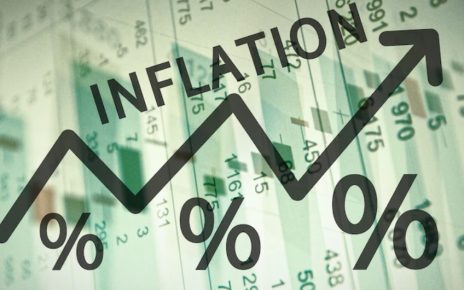- December’s US inflation data showed a modest rise but indicated a downward trend.
- Uncertainties persist regarding the timing of the Fed’s easing cycle initiation.
- ECB policymaker Martins Kazaks emphasized the need for patience before rate cuts.
On Friday, currency futures rose slightly, with the dollar dipping as December’s inflation data showed a modest rise but indicated a downward trend. This will likely prompt the Fed to cut interest rates by mid-year. Trading slowed in the afternoon before the weekend, with investors preparing for a busy week ahead. The US will release crucial economic data like January’s non-farm payrolls. Moreover, key events will include the Federal Open Market Committee meeting.
US inflation (Source: Bureau of Economic Analysis, Bloomberg)
The latest figures from the personal consumption expenditures (PCE) price index revealed a 0.2% increase last month, following a 0.1% drop in November. The figures aligned with consensus expectations. Additionally, annual inflation remained below 3% for the third consecutive month, meeting the Fed’s 2% target.
Jeff Klingelhofer, co-head of investments at Thornburg Investment Management, noted that current data suggests no significant immediate concern regarding rising inflation. Meanwhile, currency analysts at MUFG said that US economic data was giving mixed signals regarding monetary policy ahead of the Fed’s next policy statement on January 31. There are still uncertainties regarding the timing of the Fed’s easing cycle. However, March remains a possibility, mainly due to favorable inflation data within the most recent GDP report.
Following the release of inflation data, the US rate futures market indicated a 47% chance of easing at the March meeting, down from 51% the previous day and 80% two weeks before. The market expects the first rate cut to occur at the May meeting, with a probability of around 90%. At the same time, markets believe the Fed will cut rates by 25 basis points each for this year.
The yen weakened by 0.3% but was up 0.3% for the week, marking its largest weekly gain since December 25. The euro strengthened slightly after hitting a six-week low earlier, following weaker-than-expected German consumer sentiment. However, it recorded its worst weekly performance since October. Meanwhile, ECB policymaker Martins Kazaks remarked on the central bank’s efforts to lower inflation, emphasizing the need for patience before cutting rates.
On the other hand, the pound fell ahead of the Bank of England’s interest rate decision, where the central bank will likely hold rates.





